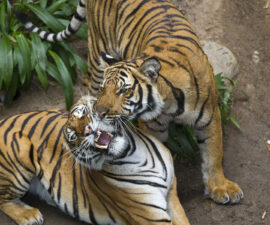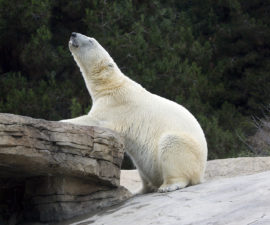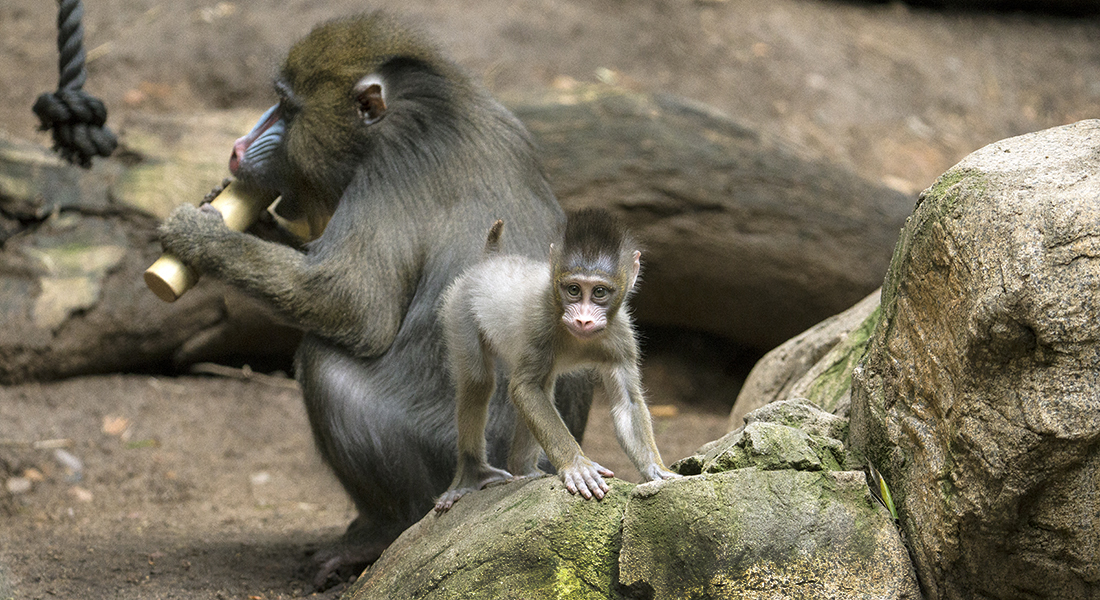
One Spunky Monkey
With a hipster hairdo, elfish ears, and the face of a wrinkled gnome, this baby mandrill gets all the attention he wants
BY Donna Parham
Photography by Ken Bohn
Videography by Victor Schwanke
Ajani, a baby mandrill whose name means “victorious” in the African Yoruba language, made his appearance last November, and he has been delighting keepers and guests ever since. Although more than 30 mandrills Mandrillus sphinx have been born at the Zoo and Safari Park over the years, the newest arrival is the first in more than 14 years.
Animal care manager Jill Andrews said that mandrill mom Kesi likely delivered her first-born the same way her counterparts in the wild do: high in a tree, in the dark of night. Precarious as it may seem, “It’s the safest place, and the best way to avoid predators,” she said. “By morning, the baby is dry, and mom is ready to bring it down and follow the troop when they set out for the day.”
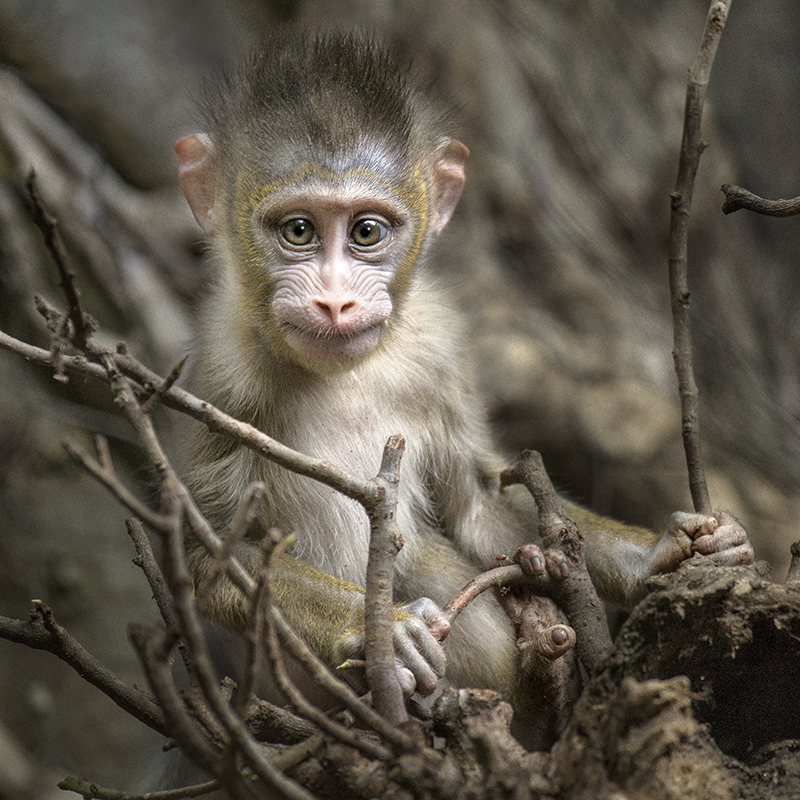
HANGIN’ OUT
Ajani explores his habitat.
Although keepers were keeping a close eye on 14-year-old Kesi’s pregnancy, they weren’t sure when she might deliver. Primate keeper Jennifer Baublit was first to catch a glimpse of the newborn. When Jennifer reported for work at 6 a.m. on November 28, the mandrills were outside in their exhibit, where they generally choose to sleep. Then, she says, “Kesi walked inside holding a baby. It was pretty incredible, especially since she came in so quietly, like a typical morning—and just happened to have a baby with her!”
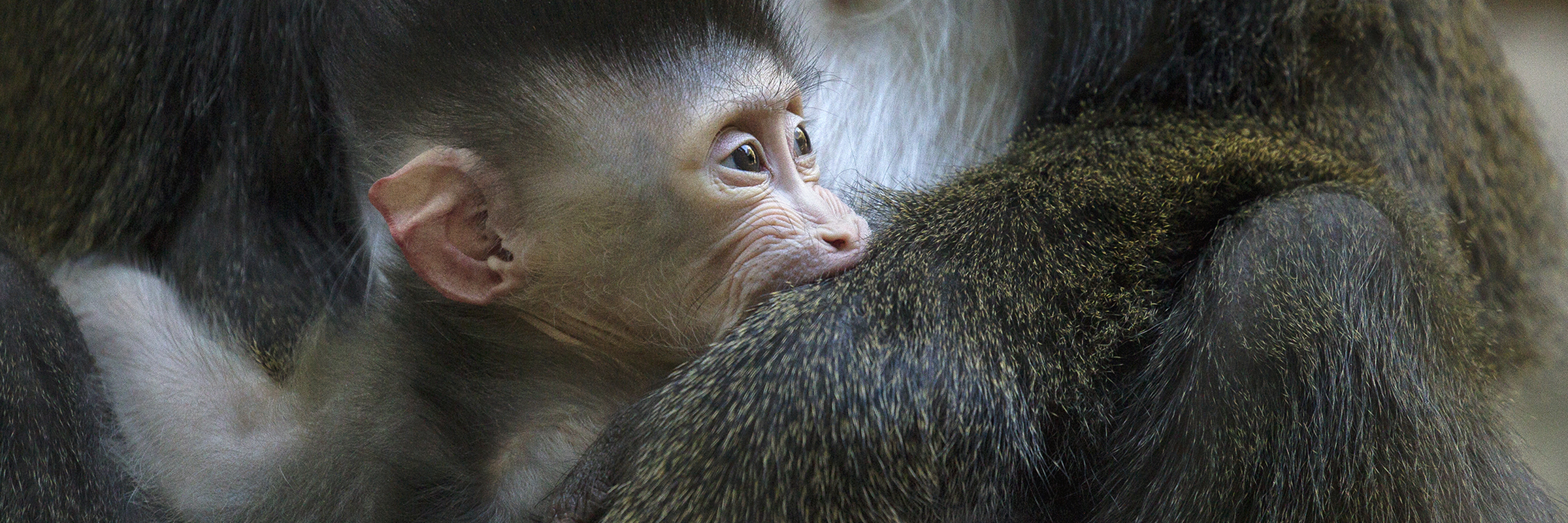
Family Life
Like any newborn, Ajani can be demanding when he’s hungry. “He’s got quite a set of pipes!” said Jennifer. Although Kesi is a first-time mom, she’s very attentive and seems to know just what to do. Jill reported, “We saw nursing right away. It was good to see that immediate maternal behavior.”
“I’m amazed at how well Kesi is doing as a mom,” agreed Jennifer. “Since she came to us from Toronto Zoo five years ago, she has really gained confidence—which has increased even more since having the baby.”
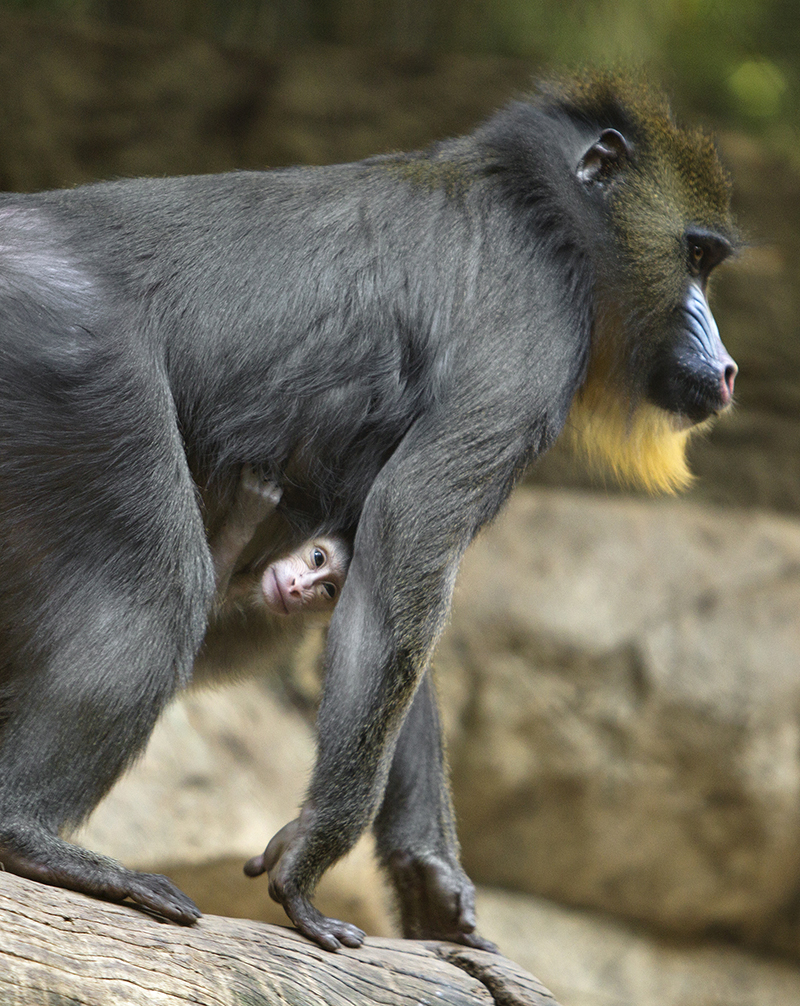
HANGIN’ ON
For a baby monkey, mom provides food, protection, and transportation.
Parenthood is a new experience for Ajani’s father, 19-year-old Jasper, too. “Jasper is acting like an appropriate father,” said Jennifer. “He’s always been a very mellow guy.” Like other male mandrills, Jasper is there to protect his family if need be—but male mandrills are hands-off with youngsters, so it’s all up to Kesi.
Bold and Beautiful
Mandrills are the world’s largest—and most colorful—monkeys, especially males, which flaunt more brilliant hues and can be nearly twice the size of females. With a shaggy mane; an orange beard; and a masklike, blue- and purple-ridged muzzle, a mandrill is one magnificent monkey. Bright red lips and nose put the final touches on its spectacular appearance. Even from the rear, a male is stunningly handsome: its vivid blue, purple, and red rump seems to glow beneath fluffy, cotton-candy-like fur.
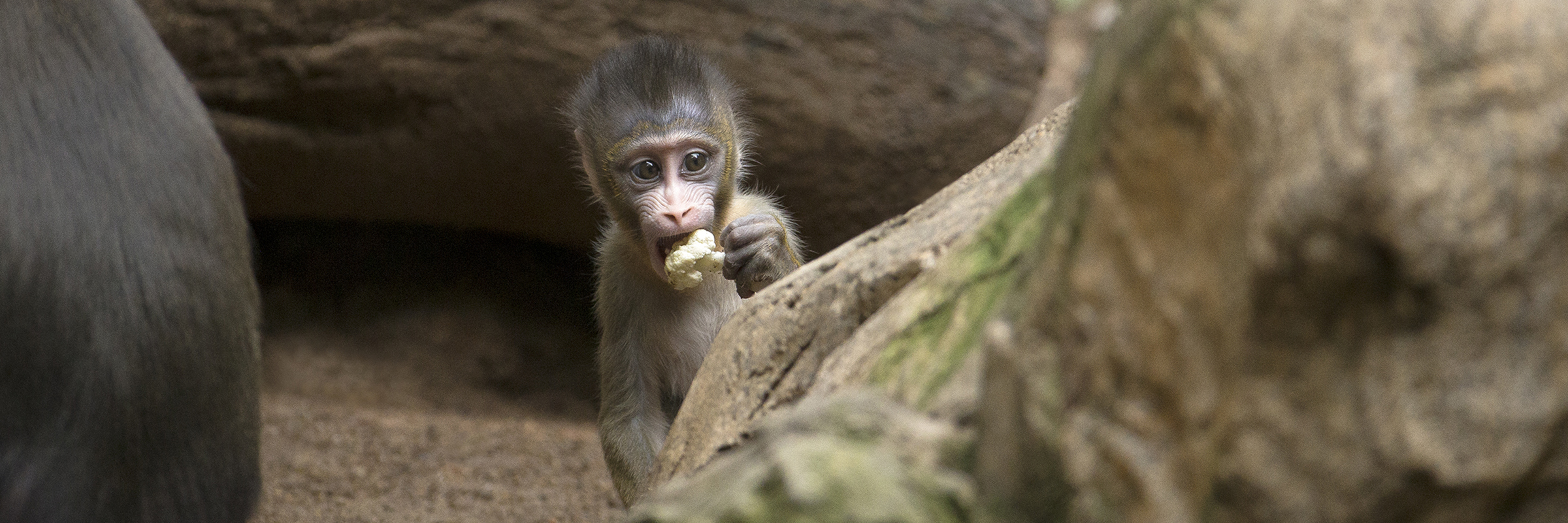
Vulnerable
Mandrills are listed as Vulnerable on the International Union for Conservation of Nature’s (IUCN) Red List of Threatened Species. Illegal logging is destroying their rain forest habitat, and a growing commercial bushmeat trade (hunting wildlife for food) may be an even greater threat to their survival. Kesi, Jasper, and Ajani are important contributors to the Association for Zoos and Aquariums’ (AZA) Species Survival Plan (SSP) for mandrills. Through SSP programs, AZA-member institutions coordinate breeding plans, with the goal of maximizing genetic diversity and increasing the population. The mandrill program is a Yellow SSP, which means that there are 50 or more animals in the breeding group, but the group currently is projected to retain less than 90 percent gene diversity in the next 100 years. “For a Yellow SSP, every birth is important to the population,” said Jill.
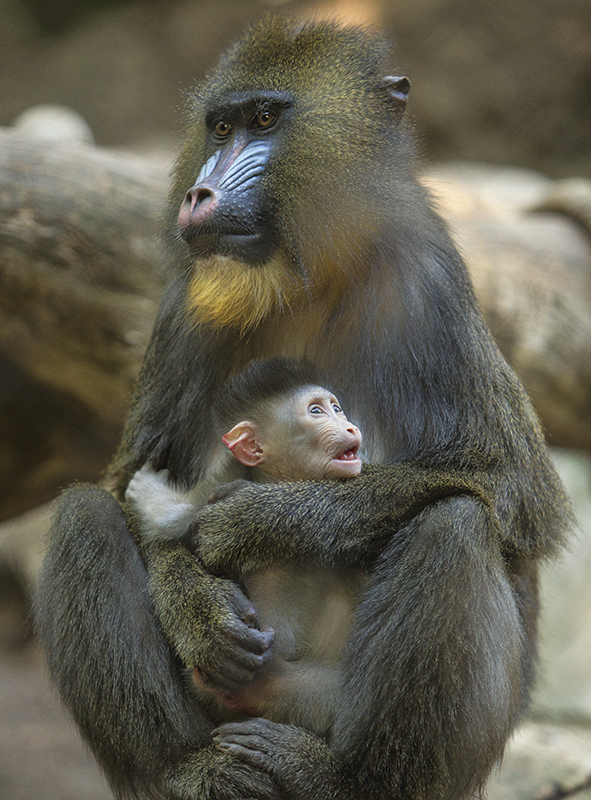
FIRST-BORN
Kesi is a first-time mom, but she seems to know just what to do with baby Ajani.
A successful SSP depends on inter-zoo animal transfers to match up mates, which means that when he’s old enough, Ajani will be called upon to help sire the next generation of mandrills. That won’t happen in the near future, though. Male mandrills take about seven years to reach maturity. “We’re all going to get to watch Ajani grow up,” Jill said.


